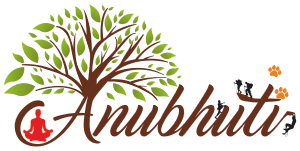Corporate Team Building Activities for Success
n today’s fast-paced corporate world, fostering a cohesive and high-performing team is more important than ever. While traditional team-building activities have their place, integrating both indoor and outdoor experiences can provide a holistic approach to team development. By incorporating David Kolb’s Experiential Learning Model, organizations can ensure that their team-building efforts are not only engaging but also deeply impactful. This blog delves into the significance of diverse team-building activities and how Kolb’s model can enhance the learning outcomes of these experiences.
In today's dynamic organizational landscape, high-performing teams are the backbone of success. But strong teams don’t happen by chance—they are built with intention, practice, and trust. One of the most effective ways to cultivate strong, collaborative teams is through team building activities, which go far beyond the occasional icebreaker or company outing. When grounded in experiential learning methodologies, team building can become a transformative experience that fosters deeper connection, creativity, and performance.
Understanding Team Building: More than Just Fun
Team building activities are structured exercises that focus on improving interpersonal relationships, clarifying roles, building trust, and promoting collective problem-solving. They can range from indoor problem-solving games and strategy simulations to outdoor adventure challenges and collaborative tasks. While these activities are often enjoyable, their primary goal is not entertainment—it’s development.
Effective team building is:
- Intentional: Designed with specific outcomes in mind (e.g., better communication, conflict resolution, leadership development).
- Interactive: Encourages participation and engagement from all members.
- Reflective: Includes time to debrief and connect learning to real-world situations.
This is where experiential learning comes into play.
Experiential Learning: Learning by Doing
Experiential learning is a hands-on approach to learning that emphasizes experience, reflection, and application. Rather than passively receiving information, individuals are immersed in experiences that challenge them to think, feel, and act. This method is particularly effective in team-building contexts, where interpersonal dynamics and behaviors are best understood through direct experience.
The foundation of this approach lies in David Kolb’s Experiential Learning Model, which outlines a four-stage learning cycle:
- Concrete Experience – Engaging in a new experience or encountering a reinterpretation of an existing experience.
- Reflective Observation – Stepping back to review and reflect on the experience.
- Abstract Conceptualization – Drawing conclusions and learning from the experience.
- Active Experimentation – Applying the new insights in real-life situations.
Let’s see how Kolb’s model enriches team building activities in both indoor and outdoor settings.
Indoor Team Building: Controlled, Creative, and Collaborative
Indoor activities offer a structured and safe environment for teams to explore communication styles, decision-making processes, and collaboration strategies. Some popular experiential indoor team building formats include:
- Escape room simulations: Teams solve a series of puzzles to "escape" within a time limit, promoting teamwork under pressure.
- Business simulations: Teams manage a virtual company or project, making decisions based on limited resources and data.
- Role-playing and storytelling: Participants act out real-world workplace scenarios to better understand empathy, leadership, and conflict resolution.
Applying Kolb’s Model:
- Concrete Experience: Participants dive into the activity—solving the mystery, navigating a virtual business crisis, or acting out a workplace scenario.
- Reflective Observation: Teams reflect on what worked, what didn’t, and how they interacted.
- Abstract Conceptualization: They discuss theories behind group dynamics, leadership styles, or decision-making frameworks.
- Active Experimentation: Insights are applied to future projects or interactions back at the workplace.
Indoor activities are especially useful for developing soft skills, such as communication, emotional intelligence, and conflict management.
Outdoor Team Building: Dynamic, Challenging, and Energizing
Outdoor activities introduce physical elements that stimulate spontaneity, adaptability, and resilience. Nature often strips away workplace hierarchies and encourages a more authentic form of interaction. Common outdoor experiential activities include:
- Obstacle courses or ropes challenges that require trust, coordination, and communication.
- Treasure hunts or orienteering tasks that require problem-solving under time pressure.
- Survival simulations (e.g., building a raft, navigating terrain) that test team planning and execution.
Why Kolb’s Model Makes a Difference
David Kolb’s model enhances learning by ensuring that participants don’t just "do an activity" but go through a cycle that transforms that experience into lasting insight. Without reflection and conceptualization, team building risks becoming superficial. But when teams move through all four stages of Kolb’s cycle, they internalize the learning and are more likely to apply it meaningfully.
Here’s how Kolb’s model specifically enhances team building outcomes:
- Encourages ownership of learning: Team members reflect on their own behavior and its impact, rather than being told what to do.
- Bridges theory and practice: Participants connect their experiences to broader workplace principles and behaviors.
- Promotes continuous improvement: The cycle fosters a mindset of experimentation, feedback, and adaptation.
- Caters to diverse learning styles: Kolb’s model supports all types of learners—doers, thinkers, observers, and planners.
Designing Effective Experiential Team Building Programs
To maximize impact, team building activities should be designed with intentionality. Here are some best practices:
- Start with outcomes: What behaviors or skills do you want to develop? Communication? Creativity? Leadership?
- Blend indoor and outdoor formats: This keeps learning dynamic and addresses different learning preferences.
- Facilitate strong debriefs: Don’t skip the reflection stage. Use questions that guide participants through Kolb’s cycle.
- Connect to work: Help participants identify how their learning applies directly to their team, project, or organizational culture.
- Repeat and reinforce: One-off activities have limited impact. Embed experiential learning into ongoing team development efforts.
eam building activities, when designed with experiential learning principles, become more than just team outings—they become powerful tools for organizational growth. By leveraging both indoor and outdoor experiences and using frameworks like David Kolb’s Experiential Learning Model, organizations can nurture teams that are not only cohesive and collaborative but also self-aware, adaptable, and continually learning.
In a world where change is constant and collaboration is key, experiential team building isn't a luxury—it’s a necessity.

